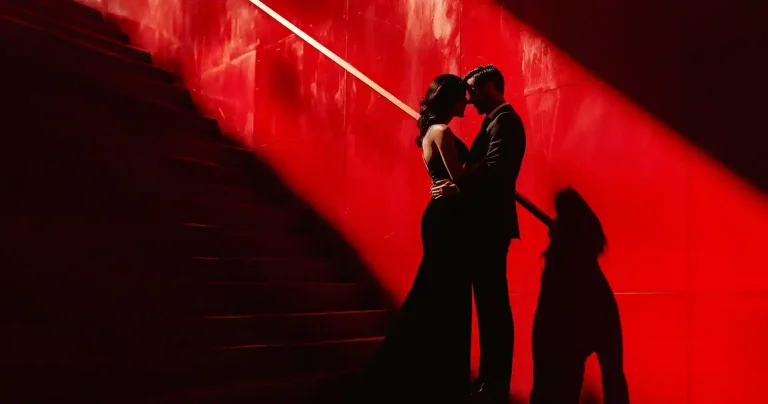1: Why a Great Story Idea is Crucial
Every great book begins with a single idea—a spark that sets the entire story in motion. But not just any idea will do. A compelling story idea is the foundation upon which everything else is built: the characters, the plot, and the emotional journey that captivates readers. Without this strong foundation, even the most beautifully written prose can fall flat. But why is the story idea so crucial? Let’s break it down.
The Backbone of a Captivating Story
Think of a story idea as the DNA of your book. It determines the genre, tone, and overall direction of your narrative. A great idea has the power to excite you as a writer and intrigue your readers from the very first sentence. Imagine picking up a book with a premise like The Hunger Games—a dystopian competition where teens fight to the death—or The Martian, where an astronaut must survive alone on Mars. These concepts hook readers immediately because they’re unique, intriguing, and full of potential.
What Makes a Story Idea Stand Out?
Not all ideas are created equal. A great story idea should check a few key boxes:
- Originality: Does it feel fresh and exciting? Even if it’s inspired by something familiar, your twist should make it unique. For example, Twilight took the age-old vampire lore and added romance in a modern high school setting.
- Relatability: Can readers see themselves in the story? Even fantastical worlds need human connections. Think about Harry Potter—while it’s about wizards, the themes of friendship, courage, and belonging resonate universally.
- Emotional Resonance: Does the idea spark curiosity, tension, or wonder? The best stories evoke emotions that linger long after the last page is turned.
Why Readers Remember Ideas, Not Words
When readers recommend a book, they often summarize it with the core idea: “It’s about a boy who discovers he’s a wizard” or “It’s about a dystopian world where love is illegal.” These hooks stay with people because they encapsulate the heart of the story. Your writing style, no matter how beautiful, is secondary to the power of your concept.
How a Strong Idea Guides Your Writing
A clear and compelling idea acts as your North Star during the writing process. It provides focus when you’re plotting twists, developing characters, or navigating writer’s block. If your idea is solid, you’ll always have something to fall back on when the story gets tangled. For example, if your core idea is “a detective who solves crimes using dreams,” you can continually ask yourself, “Does this scene explore the concept in a meaningful way?”
Examples of Weak vs. Strong Ideas
Let’s say you want to write a romance novel.
- Weak Idea: “Two people fall in love.” (It’s too vague and lacks intrigue.)
- Strong Idea: “Two people fall in love while competing for the same job—and the job involves pretending to be a couple.” (Now we’ve added tension, stakes, and a unique twist.)
By investing time in crafting a strong story idea, you’re not only setting yourself up for success but also ensuring your readers will be hooked before they even crack open the book. After all, a powerful story begins with a powerful idea.
2: Where to Find Inspiration
Finding inspiration for your next story doesn’t have to feel like searching for a needle in a haystack. The world is brimming with ideas—sometimes in the most unexpected places. By training yourself to see the potential in everyday moments, media, and even your own life, you can unlock a treasure trove of story ideas that captivate readers. Here’s how to start mining the world around you for inspiration.
Everyday Life as a Story Generator
The mundane moments of life are often where the most compelling ideas hide. A simple overheard conversation in a coffee shop can spark an entire subplot. Observing people’s quirks and interactions can inspire unique characters. For instance, imagine a stranger on the bus who looks nervous and clutches a mysterious briefcase—what’s inside? Who are they, and what’s their story?
To make the most of everyday life, keep a small notebook or use a note-taking app to jot down snippets of dialogue, strange encounters, or curious observations. Over time, these fragments can evolve into fully-fledged ideas.
Mining Personal Experiences
Your own life is a well of potential stories. While your exact experiences may seem ordinary, the emotions tied to them—joy, heartbreak, triumph—are universal and can be the heart of a powerful narrative.
For example, if you’ve ever struggled with imposter syndrome, you could write a story about a character who’s secretly unqualified for the magical destiny they’ve been handed. By weaving your personal truths into your storytelling, you create authenticity that resonates with readers.
Don’t shy away from the tough moments, either. Some of the best stories are born from pain and resilience. Think about books like Wild by Cheryl Strayed, where personal struggles form the backbone of the narrative.
Draw Inspiration from Other Media
Books, movies, TV shows, podcasts, and even video games are goldmines of inspiration. Consuming other stories sparks your imagination and encourages you to ask “What if?” For instance, what if your favorite superhero story was set in a dystopian world without technology?
The key is not to copy but to adapt and transform. Combine elements from various sources, add your unique spin, and make the idea your own. Neil Gaiman famously said, “The best way to be original is to steal from a lot of places.”
Play the “What-If” Game
“What if” is the ultimate brainstorming tool. By asking hypothetical questions, you can create endless possibilities. What if gravity suddenly stopped working? What if animals could talk, but only one person could hear them? What if every time you fell asleep, you woke up in a different timeline?
These questions don’t have to be fully formed ideas right away. Let your imagination play with them and see where they lead.
Look to the Headlines
The news can be a surprising source of inspiration. Whether it’s a bizarre crime story, a groundbreaking scientific discovery, or a heartwarming human-interest piece, current events can spark countless story ideas. For example, a headline about a lone astronaut discovering alien life could inspire a gripping sci-fi adventure.
By staying curious, observant, and open to possibilities, you’ll find that inspiration is everywhere. The key is to collect and nurture these sparks until one of them grows into a story that truly excites you.
3: Techniques for Brainstorming Story Ideas
Coming up with captivating story ideas isn’t just about waiting for inspiration to strike—it’s about using proven techniques to actively generate and refine your ideas. The following brainstorming methods will help you break through creative blocks and consistently come up with concepts that excite you and intrigue your readers.
Mind Mapping for Idea Expansion
Mind mapping is a powerful tool for organizing your thoughts and uncovering connections between ideas. Start with a central concept—such as a theme, character, or setting—and branch outward with related ideas. For example, if your central idea is “time travel,” you might create branches for “rules of time travel,” “characters impacted by time travel,” and “conflicts that arise.”
Keep expanding each branch until you stumble upon something that feels fresh and intriguing. This method allows you to visually explore all the possibilities within your initial idea.
Freewriting to Unlock Your Subconscious
Freewriting is a no-pressure way to unleash creativity. Set a timer for 10–15 minutes, grab a notebook, and start writing anything that comes to mind about a potential story idea. Don’t worry about grammar, spelling, or whether it makes sense—just let your thoughts flow.
For instance, if you’re interested in writing a mystery, freewrite about strange events, intriguing characters, or unsettling settings. You may end up with a gem hidden among the chaos, like a plot twist you hadn’t considered or a character quirk that sets your story apart.
Creative Writing Prompts
Sometimes, all you need to kickstart your creativity is a great writing prompt. Prompts provide a foundation for your imagination to build upon. For example:
- “Your character wakes up in a world where no one remembers them.”
- “An ancient prophecy predicts the end of the world, but the hero turns out to be the villain.”
- “A small town where everyone is hiding the same dark secret.”
Prompts are versatile—you can use them as-is or modify them to suit your preferred genre or themes.
Reverse Brainstorming
Instead of starting with a beginning, try working backward. Picture the climactic moment of your story, then ask yourself what led to that point. For instance, imagine a final showdown between two bitter rivals. What caused their animosity? What events brought them to this confrontation?
This technique helps you focus on the story’s most pivotal moments and reverse-engineer the journey to get there.
Collaborative Brainstorming
Two (or more) heads are often better than one. Discuss your ideas with friends, fellow writers, or a writing group. They might offer perspectives you hadn’t considered or suggest ways to refine your concept. Collaborative brainstorming sessions often lead to unexpected breakthroughs because others can see potential where you might see limitations.
Combining and Twisting Existing Ideas
Take two unrelated concepts and see how you can merge or twist them into something new. For instance, combine a murder mystery with a fairy tale setting: “A detective investigates a series of poisonings in a kingdom ruled by magical plants.”
By using these techniques, you can turn even the faintest spark of an idea into a fully fleshed-out concept. Whether you’re mind mapping, freewriting, or playing with prompts, remember that creativity thrives on exploration—so don’t be afraid to experiment and push boundaries!
4: Evaluating and Refining Your Story Ideas
Coming up with a story idea is just the first step. To ensure your idea has the potential to captivate readers, you need to evaluate and refine it. This process helps you identify its strengths, address its weaknesses, and shape it into a foundation that can support a full narrative. Here’s how to take your raw idea and turn it into a polished gem.
Test the Premise
A great story starts with a strong premise. Begin by asking yourself a few key questions:
- Is it compelling? Does the idea immediately spark curiosity or excitement? If it doesn’t excite you, it’s unlikely to excite readers.
- Does it have stakes? Readers need to care about the outcome. What challenges, conflicts, or high-stakes scenarios are baked into the idea?
- Can it sustain a full story? Some ideas are intriguing but too narrow to carry an entire book. Look for depth and the potential for multiple layers, subplots, and character development.
For example, “A woman discovers she can talk to animals” is interesting but broad. Adding stakes—“A woman discovers she can talk to animals and must stop a poaching ring before it destroys an endangered species”—gives it direction and urgency.
Identify Themes and Central Conflict
Every memorable story explores universal themes and is built around a compelling conflict. Once you’ve identified your idea, dig deeper:
- What is the story really about? Beyond the surface plot, consider the emotional or philosophical core. For example, The Hunger Games is about survival, but at its heart, it’s also about resistance, sacrifice, and the cost of freedom.
- What’s the main conflict? Whether it’s character vs. character, character vs. society, or character vs. themselves, a strong conflict is essential. Consider how the conflict will drive the plot and push your characters to grow.
Refine for Reader Appeal
Your story idea needs to resonate with your target audience. Ask yourself:
- Who is this story for? Is it aimed at young adults, fantasy enthusiasts, or mystery lovers? Knowing your audience helps you shape the tone, style, and complexity of your story.
- What makes it unique? Readers love fresh takes on familiar genres. Identify what sets your story apart. For example, if you’re writing a romance, what unique element—like an unusual setting or twist—makes your story stand out?
Gather Feedback
Sometimes, the best way to evaluate an idea is to share it. Pitch your concept to friends, writing groups, or online communities. Listen to their reactions and take note of what excites them or raises questions. Constructive feedback can help you identify strengths and address blind spots.
Create a One-Sentence Hook
Condensing your idea into a single, attention-grabbing sentence can reveal whether it’s strong and clear. For example:
- “A disgraced journalist must uncover the truth behind a secret society that controls the fate of the world.” If you can’t craft a compelling hook, your idea might need further refinement.
Start Small and Build
Once your idea feels solid, test it with a short story or outline. This allows you to explore its potential before committing to a full novel. As you develop the story, stay open to changes—sometimes the best ideas emerge during the writing process.
By evaluating and refining your story idea, you’re setting the stage for a narrative that engages readers from start to finish. With a strong premise, clear conflict, and unique appeal, your story has the potential to stand out and leave a lasting impact.








